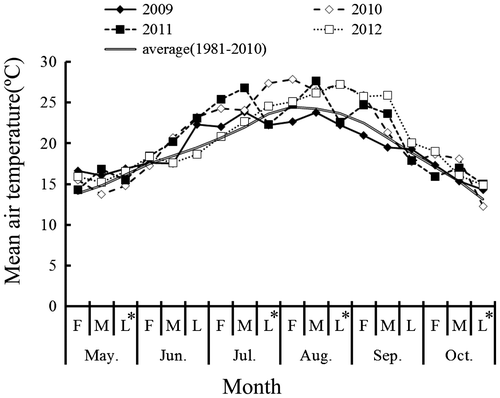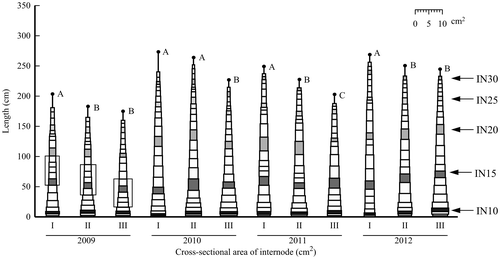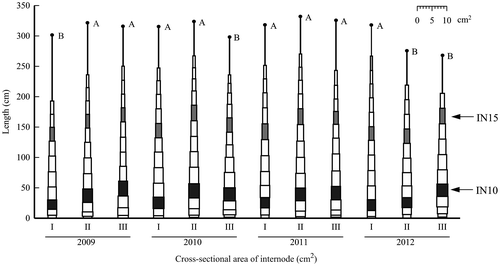Figures & data
Table 1. Seeding date.
Figure 1. Changes of air temperature during the growing season. Note. F: First ten days of the month; M: Middle ten days of the month; L: Last ten days of the month; L*: Last eleven days of the month.

Table 2. Heading rate of Kazetachi.
Table 3. Heading date of Wray.
Table 4. Days to heading after seeding in Wray.
Table 5. Total leaf number of main stem.
Table 6. Total dry weight per plant.
Table 7. Stem dry weight per plant.
Table 8. Stem volume per plant.
Table 9. Unit weight of dry main stem.
Figure 2. Stem shape of Kazetachi based on internode characteristics.
Note. These stem shapes are drawn by the average of length and cross-sectional area of each elongated internode, excluding the internode position including the neck internode. Black points represent the average of stem length in each plot. Uppercase letters of the same letter indicate no significant difference at the 5% level in the same year. The internode positions enclosed within a black line were elongating rapidly during August 1–20 in 2009.

Figure 3. Stem shape of Wray based on internode characteristics.
Note. These stem shapes are drawn by the average of length and cross-sectional area of each elongated internode, excluding the internode position including the neck internode. Black points represent the average of stem length in each plot. Uppercase letters of the same letter indicate no significant difference at the 5% level in the same year.
